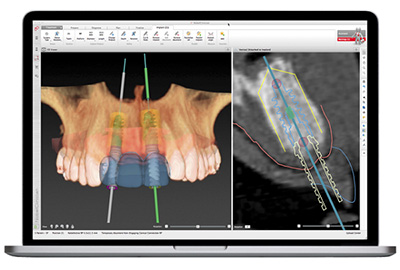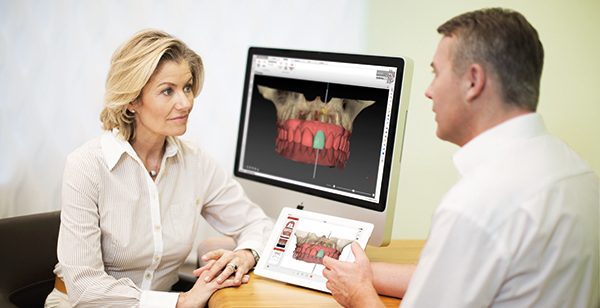* Patient expectations
Dental implants can improve oral function and appearance, which can positively impact a person’s overall daily functioning and well-being. However – although reported survival rates of dental implants are generally high – complications may occur and it is important that patients understand the risks involved. In a recent paper, researchers found that patients may have unrealistically high expectations of dental implant treatment. The results highlight the importance of patient-centered communication in dentistry and the need to inform individuals of the possible risks involved.
This should not minimize the patient’s role in maintaining oral hygiene; they need to understand and accept their responsibility for following recommended aftercare guidelines.
* Visual aids
People learn and absorb information through different methods. Visual aids can arouse interest and make the subject matter more tangible.
This makes them ideal to help explain a treatment procedure and to walk a patient through the process step-by-step. According to Dr. Werner Zechner, Austria, “a picture really is worth a 1000 words.” Furthermore, the use of visual communication tools has been proven to result in significantly higher patient satisfaction.
as professionals are able to demonstrate details of proposed treatment plans and show patients possible end results.
Dr. Scott MacLean, Canada, agrees: “We sometimes focus too much on the details of the procedure itself, which might scare the patient and make him or her apprehensive about treatment. Visual stimulation is an extremely powerful tool and helps the patient get more involved in the treatment.”
* Treatment planning software
Treatment planning software can be extremely helpful when introducing patients to the dental implant procedure. Clinicians have time to explain the treatment plan and visually demonstrate to patients the need for any additional procedures, such as a bone grafting or soft tissue augmentation. It is also possible to discuss success rates, potential complications and treatment alternatives, walking patients through the entire clinical sequence step-by-step
* Added benefit – team communication
Implant success and survival relies on accurate preoperative surgical and prosthetic planning involving all members of the team, both in the practice and the lab. All members of the dental team benefit from the accurate communication of case and patient details – the surgeon needs the data for effective surgical planning; the restorative dentist requires the same information in order to plan the most appropriate restoration; and close collaboration with the dental technician will help ensure the design and production of precise-fitting, natural-looking prostheses. Utilizing solutions such as the NobelClinician treatment planning software ensures that information is easily accessible to all relevant team members.
Effective communication within the entire treatment team is essential. Both patients and staff need to have a clear understanding of the proposed treatment, and visualization tools can help to achieve this. From patient diagnostics to treatment planning and surgery, this can positively impact all aspects of implant treatment to enhance the patient experience.









